Speech Recognition and Synthesis are two related technologies that are used to enable computers and other digital devices to understand and respond to human speech.
Speech Recognition, also known as Speech-to-Text or Automatic Speech Recognition (ASR), is the
technology that lets your computer or smartphone understand what you’re saying when you talk to it. It’s like having a personal translator, but for your device. You can ask your phone for directions, dictate an email, or even control your home automation system, all with just your voice.
This technology is like a superpower for those who don’t want to type or touch their devices. Imagine being able to talk to your phone and have it instantly respond, without having to fumble around with a tiny keyboard or touchscreen. It’s like having your own personal assistant, who’s always there to help you out.
Of course, like any superpower, Speech Recognition can sometimes be a bit finicky. If you have a strong accent or speak too quickly, your device might not understand what you’re saying. And let’s not forget about the perils of background noise, which can turn a simple voice command into a frustrating game of “repeat after me.”
But despite these challenges, Speech Recognition technology is constantly improving, thanks to the magic of machine learning and artificial intelligence. This means that your device can learn to understand your voice better over time, adapting to your unique way of speaking and even learning new words and phrases as you use them.
This technology is used in a wide range of applications, from voice-controlled assistants like Siri or Alexa, to automated phone systems and language translation tools.
Speech Synthesis is the technology that lets your computer or smartphone talk to you in a human-like voice. It’s like having your own personal robot friend who can read you a story, tell you the weather, or even crack a joke or two.
This technology is like having your own personal narrator, bringing your device to life with a voice that’s both clear and expressive. You can listen to an audiobook, get directions from your GPS, or even have your emails read to you while you’re on the go.
Of course, like any robot friend, Speech Synthesis can sometimes be a bit robotic. The voice might sound a bit mechanical or even a bit creepy, like something out of a sci-fi movie. And let’s not forget about the limitations of the technology, which can struggle with more complex language and intonation.
But despite these challenges, Speech Synthesis technology is constantly improving, thanks to the latest advances in artificial intelligence and machine learning. This means that your device can learn to mimic human speech better over time, producing voices that are more natural and expressive.
also known as Text-to-Speech (TTS), is the process of converting written text into spoken words. This technology is used in applications like audiobooks, virtual assistants, and automated phone systems.
Both Speech Recognition and Synthesis rely on sophisticated algorithms and machine learning techniques to accurately interpret and produce speech. In the case of Speech Recognition, the algorithm analyzes the acoustic features of the speech signal, such as pitch, intensity, and duration, and matches these to a database of known speech sounds and words. The algorithm then uses statistical models to identify the most likely words or phrases that were spoken.
In the case of Speech Synthesis, the algorithm analyzes the text and generates a waveform that corresponds to the speech sounds that would be produced if a human were reading the text out loud. The waveform is then played through a speaker to produce the synthesized speech.
One of the main challenges in developing Speech Recognition and Synthesis technologies is dealing with the variability of human speech. Factors like accent, dialect, and background noise can all affect the accuracy of these technologies, and researchers are constantly working to improve their performance in these challenging environments.
Despite these challenges, Speech Recognition and Synthesis have become increasingly widespread and are now integrated into many of the devices and applications that we use every day. As these technologies continue to improve, we can expect to see even more innovative and useful applications in the future.
